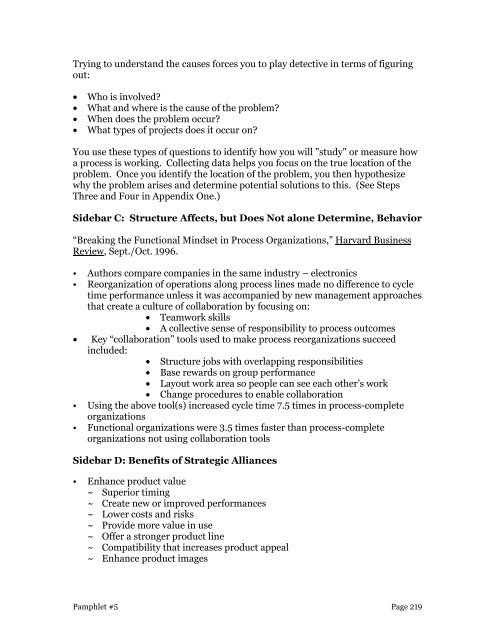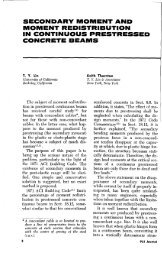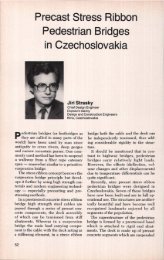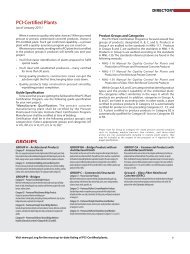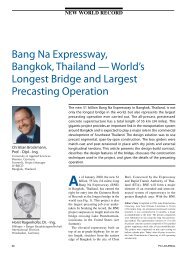Winning Without Competition: How to Break Out of a Commodity ...
Winning Without Competition: How to Break Out of a Commodity ...
Winning Without Competition: How to Break Out of a Commodity ...
You also want an ePaper? Increase the reach of your titles
YUMPU automatically turns print PDFs into web optimized ePapers that Google loves.
Trying <strong>to</strong> understand the causes forces you <strong>to</strong> play detective in terms <strong>of</strong> figuring<br />
out:<br />
• Who is involved?<br />
• What and where is the cause <strong>of</strong> the problem?<br />
• When does the problem occur?<br />
• What types <strong>of</strong> projects does it occur on?<br />
You use these types <strong>of</strong> questions <strong>to</strong> identify how you will "study" or measure how<br />
a process is working. Collecting data helps you focus on the true location <strong>of</strong> the<br />
problem. Once you identify the location <strong>of</strong> the problem, you then hypothesize<br />
why the problem arises and determine potential solutions <strong>to</strong> this. (See Steps<br />
Three and Four in Appendix One.)<br />
Sidebar C: Structure Affects, but Does Not alone Determine, Behavior<br />
“<strong>Break</strong>ing the Functional Mindset in Process Organizations,” Harvard Business<br />
Review, Sept./Oct. 1996.<br />
• Authors compare companies in the same industry – electronics<br />
• Reorganization <strong>of</strong> operations along process lines made no difference <strong>to</strong> cycle<br />
time performance unless it was accompanied by new management approaches<br />
that create a culture <strong>of</strong> collaboration by focusing on:<br />
• Teamwork skills<br />
• A collective sense <strong>of</strong> responsibility <strong>to</strong> process outcomes<br />
• Key “collaboration” <strong>to</strong>ols used <strong>to</strong> make process reorganizations succeed<br />
included:<br />
• Structure jobs with overlapping responsibilities<br />
• Base rewards on group performance<br />
• Layout work area so people can see each other’s work<br />
• Change procedures <strong>to</strong> enable collaboration<br />
• Using the above <strong>to</strong>ol(s) increased cycle time 7.5 times in process-complete<br />
organizations<br />
• Functional organizations were 3.5 times faster than process-complete<br />
organizations not using collaboration <strong>to</strong>ols<br />
Sidebar D: Benefits <strong>of</strong> Strategic Alliances<br />
• Enhance product value<br />
~ Superior timing<br />
~ Create new or improved performances<br />
~ Lower costs and risks<br />
~ Provide more value in use<br />
~ Offer a stronger product line<br />
~ Compatibility that increases product appeal<br />
~ Enhance product images<br />
Pamphlet #5 Page 219


